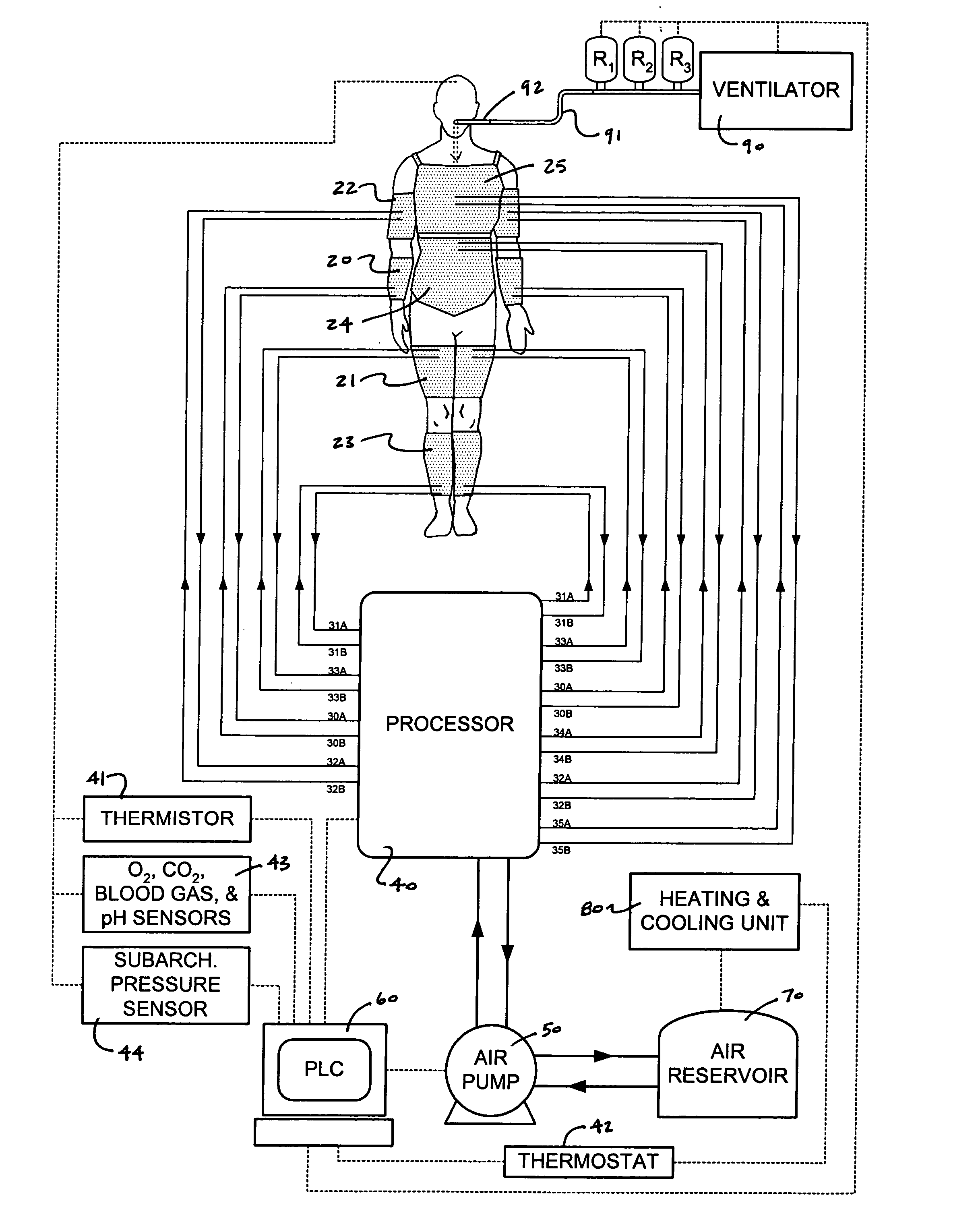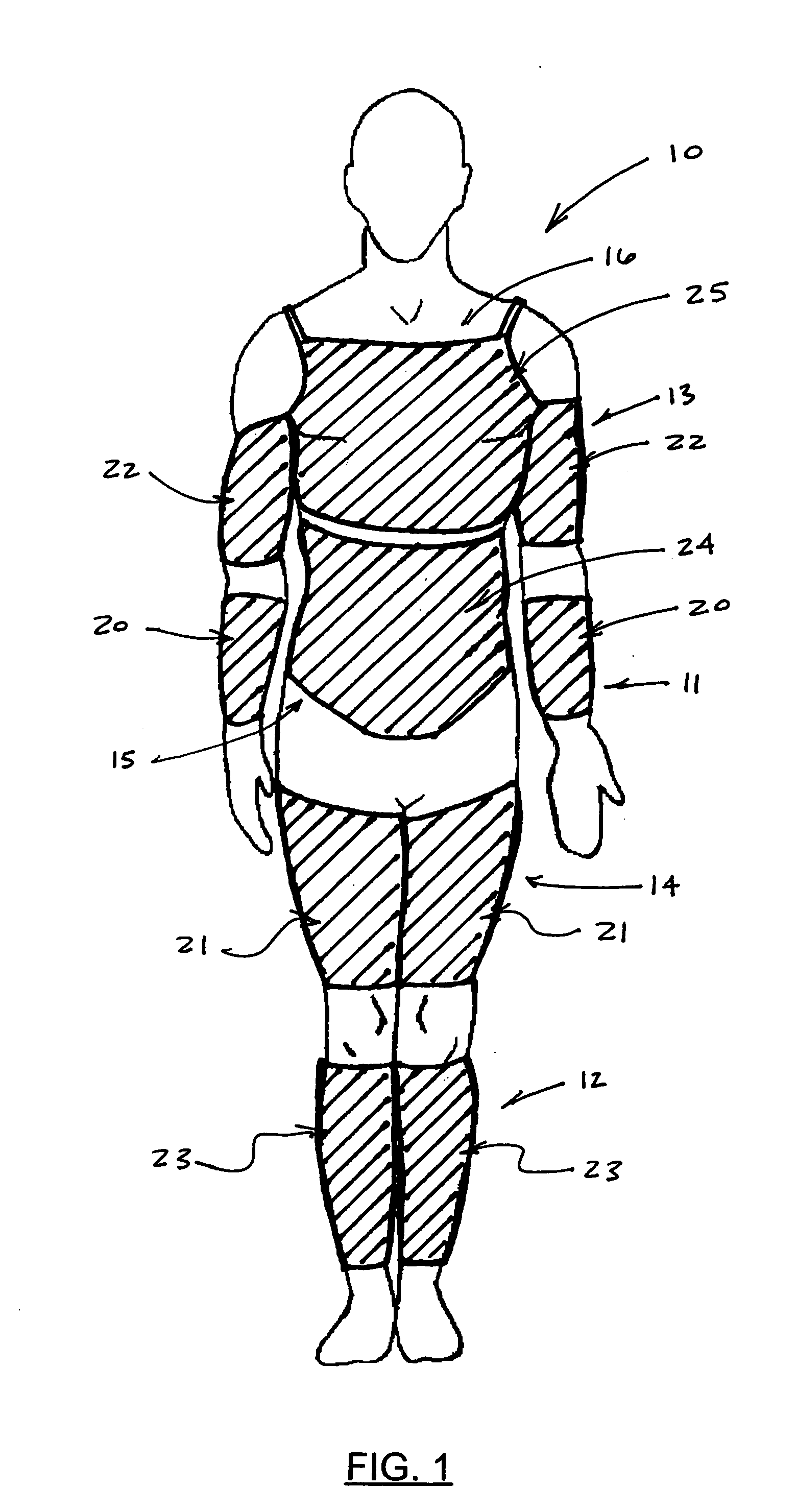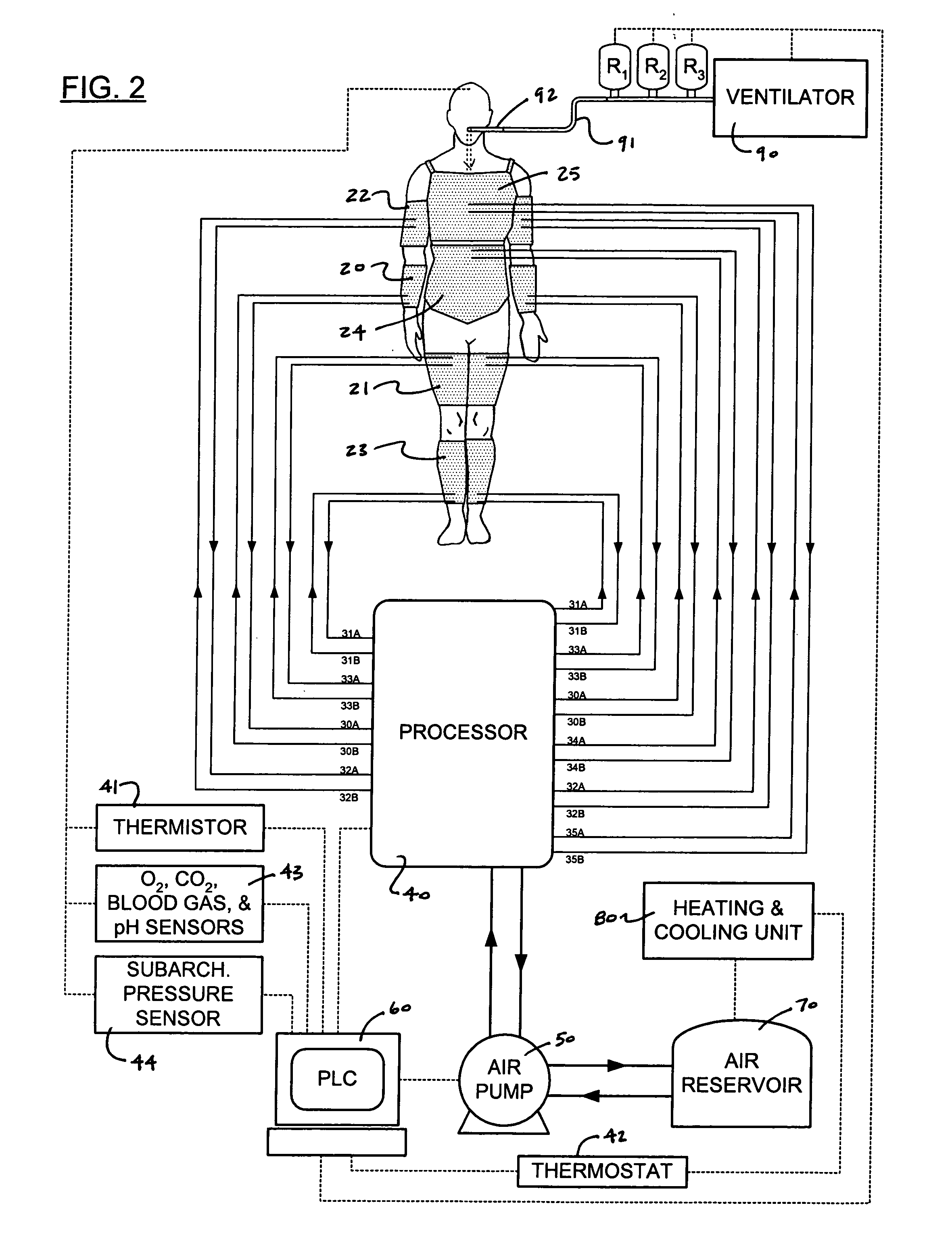[0011] In operation, the PLC directs the sequence in which the cuffs pressure up by opening the valves to supply the cuffs with gas, fluid or electroexpansile gel. This sequence is as follows: (1) the
forearm cuffs and lower leg cuffs pressure up, (2) the upper arm cuffs and
thigh cuffs pressure up, (3) the abdominal
cuff pressures up, and (4) the breast-conforming thoracic
cuff pressures up. This particular sequence of applying pressure to different parts of the body induces the patient to breathe out or expire air from the lungs, as well as promotes circulation of blood from the extremities of the body (i.e., arms and legs) to the head. Moreover, use of these pressure cuffs in accordance with the present invention limits physical coverage of the body of the patient such that medical practitioners have convenient access for treatment of wounds and
insertion of intravenous and intraarterial devices into sites—such as cervical, subclavian, antecubital, hand,
wrist, and femoral sites. Moreover, visual access to patients is enhanced by the availability of all cuffs in transparent material. Furthermore, access for dressing changes and other kinds of hands-on
patient care is accomplished by means of removable sub-segments of each
cuff. Still furthermore, where the garment is not a single piece but rather jointed (i.e., composed of separate cuffs), full and ready access to the body of the patient is provided at the head, neck, hands, feet, elbows, knees, pelvic girdle,
shoulder girdle, and thoraco-abdominal junction.
[0014] A similar usage facilitates “breath-holding”, a maneuver that—like coughing—is available in no other ventilatory assist
system. This functionality is particularly useful when switching a subject from one pulmocardiac assist
system to another which of course requires disconnection and reconnection. Breath-holding in the interim makes such transfer easier. Ordinarily the “
glottis” closes at the beginning of inspiration and remains closed until the end of inspiration, opening then to allow egress of air
during expiration. By holding the
glottis closed at the end of inspiration, so that pressure is maintained for the selected time, “breath-holding” is accomplished. In addition to facilitating transfer from one pulmocardiac assist system to another, this also provides a maneuver for reducing movement artifact as well as electrical artifact for such things as
electrocardiography.
[0017] Yet another object of the present invention is to provide a breast-conforming thoracic pressure cuff including a set of electrocardiogram (EKG) leads which allows for three, twelve, or more-leaded EKG's or other
heart monitoring devices. This allows the patient to be monitored for heart conditions without interfering with the expiratory assistance functionality of the thoracic cuff. Because EKG data is integral to the garment, EKG gating is a feature of garment pressurization. While
arterial flow may be compromised to some extent by the pressuring-up cycle for expiration, in circumstances where it is important, gating can drive small depressurizations within each larger expiratory pressurization, timed to ameliorate the increase in cardiac preload induced by regular external pressurization.
[0021] Yet a further object of the present invention is to provide a cuff or set of cuffs for facilitating circulation that can be used without a garment or being attached to the other cuffs. Anchoring the cuff or cuffs could be achieved in a variety of ways, including but not limited to adhesives.
[0023] Still a further object of this invention is to provide for patient portability while using the respiratory or circulatory assist functions. The equipment can be mounted on a fully-configured
bed,
cart,
wheelchair, walker or other motorized or pushed device (e.g. an automoble) to facilitate patient mobility and
quality of life. Furthermore, the equipment could be integrated (via wall or other mounting) into an
intensive care unit (ICU), other patient unit, or even a
residence.
 Login to View More
Login to View More  Login to View More
Login to View More 


